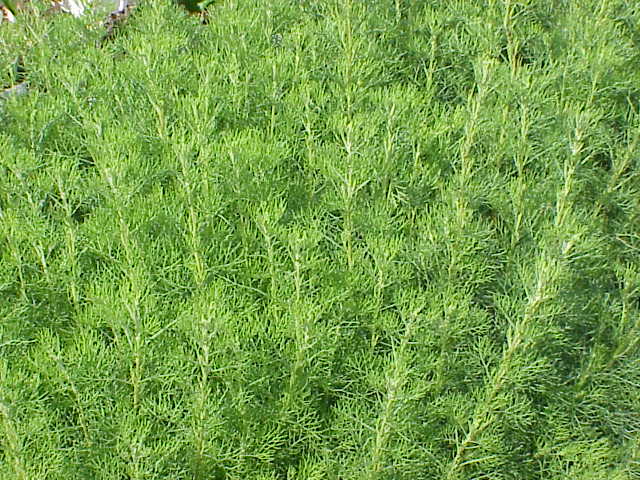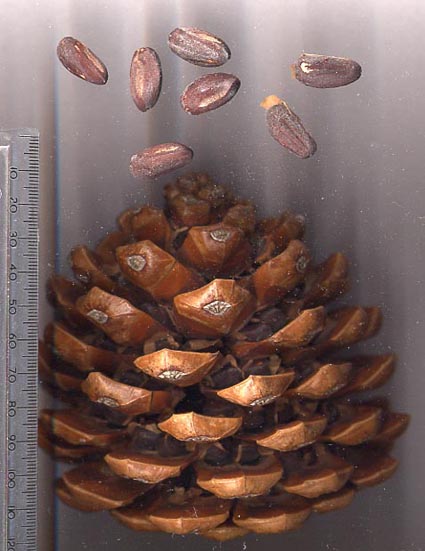|
Siru-tteok
''Siru-tteok'' () is a type of Korean rice cake (''tteok'') traditionally made by steaming rice or glutinous rice flour in a '' siru'' (). The popularity of ''siru-tteok'' grew as the usage of ''siru'' spread across the Korean peninsula. As it is not an everyday utensil but rather used for preparing sacrificial dishes during rituals, ''siru-tteok'' is not a casual dish made to enjoy. The making of ''siru-tteok'' is said to be the oldest form of ''tteok'' (). ''Tteok'' (), or steamed rice cake, which is made by steaming powdered rice, then pounding or rolling the dough, itself dates back to 57 B.C.E, along with the ''siru''. The ''siru-tteok'' dish is a layered cake of the glutinous rice that is filled often filled with beans and/or red beans (pat, 팥), and the most seen and basic sacrifice offered in rituals for household gods. This cake is generally used for bad fortune prevention rituals (aengmagi) to bring wealth, luck and health into the households. The red beans / filli ... [...More Info...] [...Related Items...] OR: [Wikipedia] [Google] [Baidu] |
Siru
''Siru'' () is an earthenware steamer used to steam grain or grain flour dishes such as ''tteok'' (rice cakes), most notably ''siru-tteok''. The ''siru'' is an earthenware steaming vessel that dates back to the late bronze age of the Korean northern peninsula and the use of the utensil spread to the entire peninsula by the time of the Three Kingdoms in which the popularity of ''siru-tteok'' grew. The ''siru'' is also used during shamanic rituals and is even offered on the tables for ''daegamsin'' (대감신; 大監神, state official God). The ''siru'' is not an everyday utensil but is one for preparing and serving the sacrificial dishes during rituals. A ''siru'' consists of a handle, a body, and a bottom with holes, so that when placed above a fire, steam can easily reach the contents inside. The size of the bottom and the diameter of the ''siru'' is generally the same, and the size of the ''siru'' each have significance: large ''siru'' are for worshipping ''seongju'' (), the ... [...More Info...] [...Related Items...] OR: [Wikipedia] [Google] [Baidu] |
:Category:Korean Words And Phrases
{{see, wikt:Korean language Words A word is a basic element of language that carries meaning, can be used on its own, and is uninterruptible. Despite the fact that language speakers often have an intuitive grasp of what a word is, there is no consensus among linguists on its ... Words and phrases by language ... [...More Info...] [...Related Items...] OR: [Wikipedia] [Google] [Baidu] |
Rice
Rice is a cereal grain and in its Domestication, domesticated form is the staple food of over half of the world's population, particularly in Asia and Africa. Rice is the seed of the grass species ''Oryza sativa'' (Asian rice)—or, much less commonly, ''Oryza glaberrima'' (African rice). Asian rice was domesticated in China some 13,500 to 8,200 years ago; African rice was domesticated in Africa about 3,000 years ago. Rice has become commonplace in many cultures worldwide; in 2023, 800 million tons were produced, placing it third after sugarcane and maize. Only some 8% of rice is traded internationally. China, India, and Indonesia are the largest consumers of rice. A substantial amount of the rice produced in developing nations is lost after harvest through factors such as poor transport and storage. Rice yields can be reduced by pests including insects, rodents, and birds, as well as by weeds, and by List of rice diseases, diseases such as rice blast. Traditional rice polyc ... [...More Info...] [...Related Items...] OR: [Wikipedia] [Google] [Baidu] |
Black Pepper
Black pepper (''Piper nigrum'') is a flowering vine in the family Piperaceae, cultivated for its fruit (the peppercorn), which is usually dried and used as a spice and seasoning. The fruit is a drupe (stonefruit) which is about in diameter (fresh and fully mature), dark red, and contains a stone which encloses a single pepper seed. Peppercorns and the ground pepper derived from them may be described simply as ''pepper'', or more precisely as ''black pepper'' (cooked and dried unripe fruit), ''green pepper'' (dried unripe fruit), or ''white pepper'' (ripe fruit seeds). Black pepper is native to the Malabar Coast of India, and the Malabar pepper is extensively cultivated there and in other tropical regions. Ground, dried, and cooked peppercorns have been used since antiquity, both for flavour and as a traditional medicine. Black pepper is the world's most traded spice, and is one of the most common spices added to cuisines around the world. Its spiciness is due to the che ... [...More Info...] [...Related Items...] OR: [Wikipedia] [Google] [Baidu] |
Artemisia (genus)
''Artemisia'' ( ) is a large, diverse genus of plants belonging to the daisy family, Asteraceae, with almost 500 species. Common names for various species in the genus include mugwort, wormwood, and sagebrush. Some botanists split the genus into several genera, but DNA analysis does not support the maintenance of the genera ''Crossostephium'', ''Filifolium'', ''Neopallasia'', ''Seriphidium'', and ''Sphaeromeria''; three other segregate genera—''Stilnolepis'', ''Elachanthemum'', and ''Kaschgaria''—are maintained by this evidence. Occasionally, some of the species are called sages, causing confusion with the ''Salvia'' sages in the family Lamiaceae. ''Artemisia'' comprises hardy herbaceous plants and shrubs, which are known for the powerful chemical constituents in their essential oils. ''Artemisia'' species grow in temperate climates of both hemispheres, usually in dry or semiarid habitats. Notable species include '' A. vulgaris'' (common mugwort), '' A. triden ... [...More Info...] [...Related Items...] OR: [Wikipedia] [Google] [Baidu] |
Korean Radish
''Mu'' () or Korean radish is a variety of white radish with a firm crunchy texture. Although ''mu'' is also a generic term for radishes in Korean, the word is usually used in its narrow sense, referring to the white radish, or more specifically Korean radish (, ''Joseon-mu''). Korean radishes are generally short, stout, and sturdy, and have a pale green shade halfway down from the top. They also have a strong flavour, dense flesh and soft leaves. The greens of Korean radishes are called ''mucheong'' () and are used as a vegetable in various dishes. Description Korean radishes, like other radishes, are an annual or biennial crop grown for the taproots. The rotund cylindrical roots weigh about , being approximately long with their diameter around . The flesh of Korean radishes harvested timely is crisp, peppery and sweet. The upper part of the roots are subterranean stems, from which the long ovate leaves grow. The pinnate leaves with enlarged terminal lobe and smaller ... [...More Info...] [...Related Items...] OR: [Wikipedia] [Google] [Baidu] |
Lichen
A lichen ( , ) is a hybrid colony (biology), colony of algae or cyanobacteria living symbiotically among hypha, filaments of multiple fungus species, along with yeasts and bacteria embedded in the cortex or "skin", in a mutualism (biology), mutualistic relationship.Introduction to Lichens – An Alliance between Kingdoms . University of California Museum of Paleontology. . Lichens are the lifeform that first brought the term symbiosis (as ''Symbiotismus'') into biological context. Lichens have since been recognized as important actors in nutrient cycling and producers which many higher trophic feeders feed on, such as reindeer, gastropods, nematodes, mites, and springtails. Lichens have properties different from those of their component organisms. They come in man ... [...More Info...] [...Related Items...] OR: [Wikipedia] [Google] [Baidu] |
Umbilicaria Esculenta
''Umbilicaria esculenta'', the rock tripe or Iwa-take, is a lichen of the genus '' Umbilicaria'' that grows on rocks. Morphology Two different types of polysaccharides are known to be the structural components, both a heteroglycan from the fungus and a glucan from the alga.Sone, Y., Isoda-Johmura, M., & Misaki, A. (1996). Isolation and chemical characterization of polysaccharides from Iwatake, Gyrophora esculenta Miyoshi. ''Bioscience, biotechnology, and biochemistry'', ''60''(2), 213-215. U. esculenta lichens have a thallus attached to the substrate with a central holdfast.Watson, R. R. (n.d.). ''Polyphenols in plants isolation, purification and extract preparation''. Academic press, an imprint of Elsevier. The thallus is also heteromerous (parts that are different in quality and number) and fully corticated (has a cortex and bark). Many of the Umbilicaria species are characterized by a veined or rugose thalline surface. Ecology ''Umbilicaria esculenta'' is a saxicolous lic ... [...More Info...] [...Related Items...] OR: [Wikipedia] [Google] [Baidu] |
Angelica Sinensis
''Angelica sinensis'', commonly known as ''dong quai'' () or female ginseng, is a herb belonging to the family Apiaceae, indigenous to China. ''A. sinensis'' grows in cool high altitude mountains in East Asia. The yellowish brown root of the plant is harvested in the fall and used in traditional Chinese medicine. There is no scientific evidence that ''A. sinensis'' is effective for any medicinal purpose. Cultivation Angelica is hardy to and can be cultivated at elevations of . Seedlings need to be kept out of direct sunlight, but the mature plant can withstand it. Angelica requires deep moist fertile soil and is perennial if prevented from going to seed. Traditional Chinese medicine The dried root of ''A. sinensis'' commonly known as Chinese angelica () is widely used in traditional Chinese medicine. Use and adverse effects Although ''A. sinensis'' has been used safely in doses up to 150 mg daily, there is evidence that it may affect the muscles of the uterus. Anticoagulant ... [...More Info...] [...Related Items...] OR: [Wikipedia] [Google] [Baidu] |
Pine Nut
Pine nuts, also called piñón (), pinoli (), or pignoli, are the edible seeds of pines (family Pinaceae, genus ''Pinus''). According to the Food and Agriculture Organization, only 29 species provide edible nuts, while 20 are traded locally or internationally owing to their seed size being large enough to be worth harvesting; in other pines, the seeds are also edible but are too small to be of notable value as human food. The biggest producers of pine nuts are China, Russia, North Korea, Pakistan and Afghanistan. As pines are gymnosperms, not angiosperms (flowering plants), pine nuts are not " true nuts"; they are not botanical fruits, the seed not being enclosed in an ovary which develops into the fruit, but simply bare seeds—"gymnosperm" meaning literally "naked seed" (from and ). The similarity of pine nuts to some angiosperm fruits is an example of convergent evolution. Species and geographic spread In Asia, two species, in particular, are widely harvested: Korea ... [...More Info...] [...Related Items...] OR: [Wikipedia] [Google] [Baidu] |
Walnut
A walnut is the edible seed of any tree of the genus '' Juglans'' (family Juglandaceae), particularly the Persian or English walnut, '' Juglans regia''. They are accessory fruit because the outer covering of the fruit is technically an involucre and thus not morphologically part of the carpel; this means it cannot be a drupe but is instead a drupe-like nut. After full ripening, the shell is discarded, and the kernel is eaten. Nuts of the eastern black walnut ('' Juglans nigra'') and butternuts ('' Juglans cinerea'') are less commonly consumed. Description Walnuts are the round, single-seed stone fruits of the walnut tree. They ripen between September and November in the northern hemisphere. The brown, wrinkly walnut shell is enclosed in a husk. Shells of walnuts available in commerce usually have two segments (but three or four-segment shells can also form). During the bumming process, the husk becomes brittle and the shell hard. The shell encloses the kernel or meat ... [...More Info...] [...Related Items...] OR: [Wikipedia] [Google] [Baidu] |
Chestnut
The chestnuts are the deciduous trees and shrubs in the genus ''Castanea'', in the beech family Fagaceae. The name also refers to the edible nuts they produce. They are native to temperate regions of the Northern Hemisphere. Description Chestnut trees are of moderate growth rate (for the Chinese chestnut tree) to fast-growing for American and European species. Their mature heights vary from the smallest species of chinkapins, often shrubby,''Chestnuts, Horse-Chestnuts, and Ohio Buckeyes'' . In Yard and Garden Brief, Horticulture department at University of Minnesota. to the giant of past American forests, '' C. dentata'' that could reach . Between these extremes ar ... [...More Info...] [...Related Items...] OR: [Wikipedia] [Google] [Baidu] |






